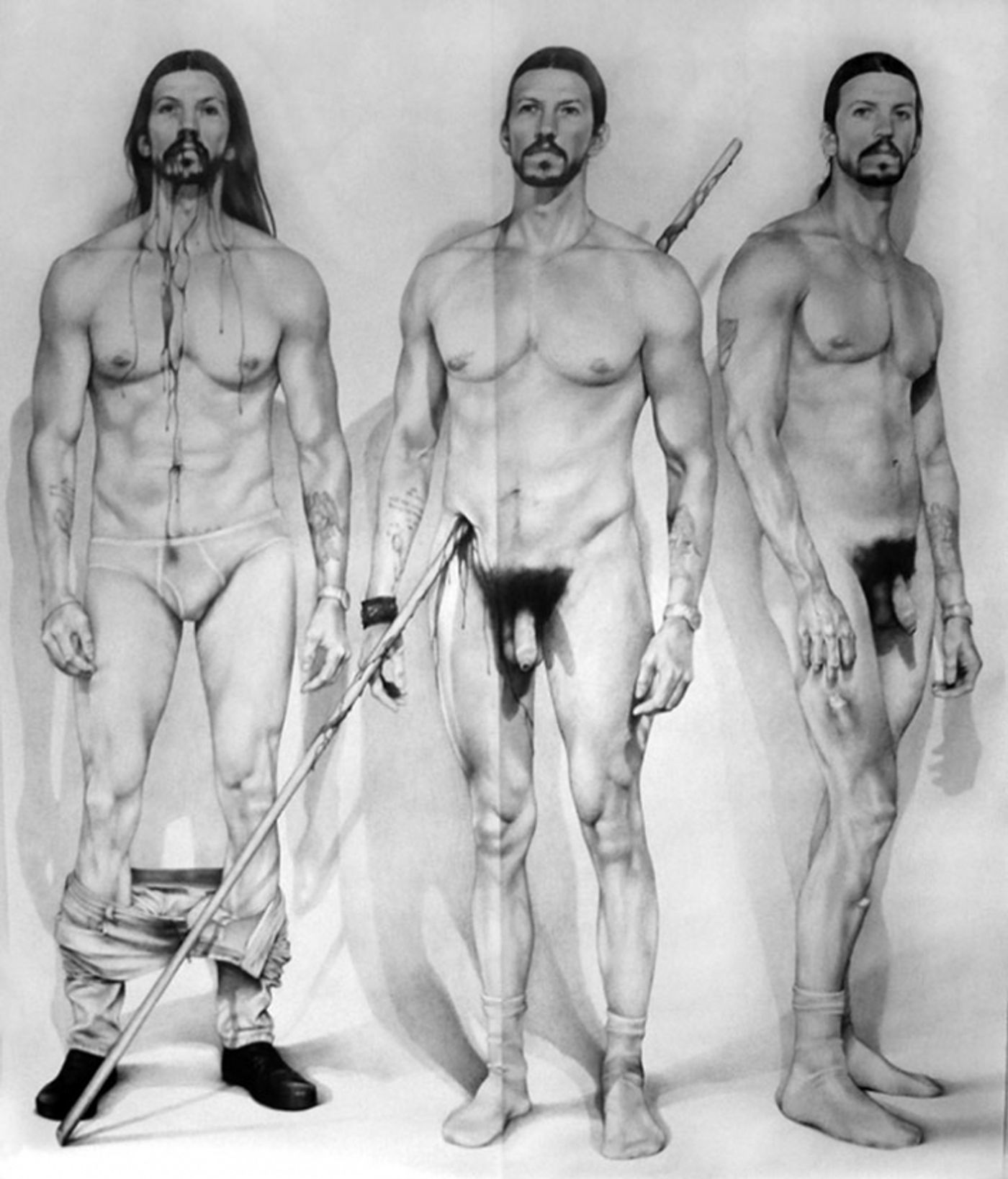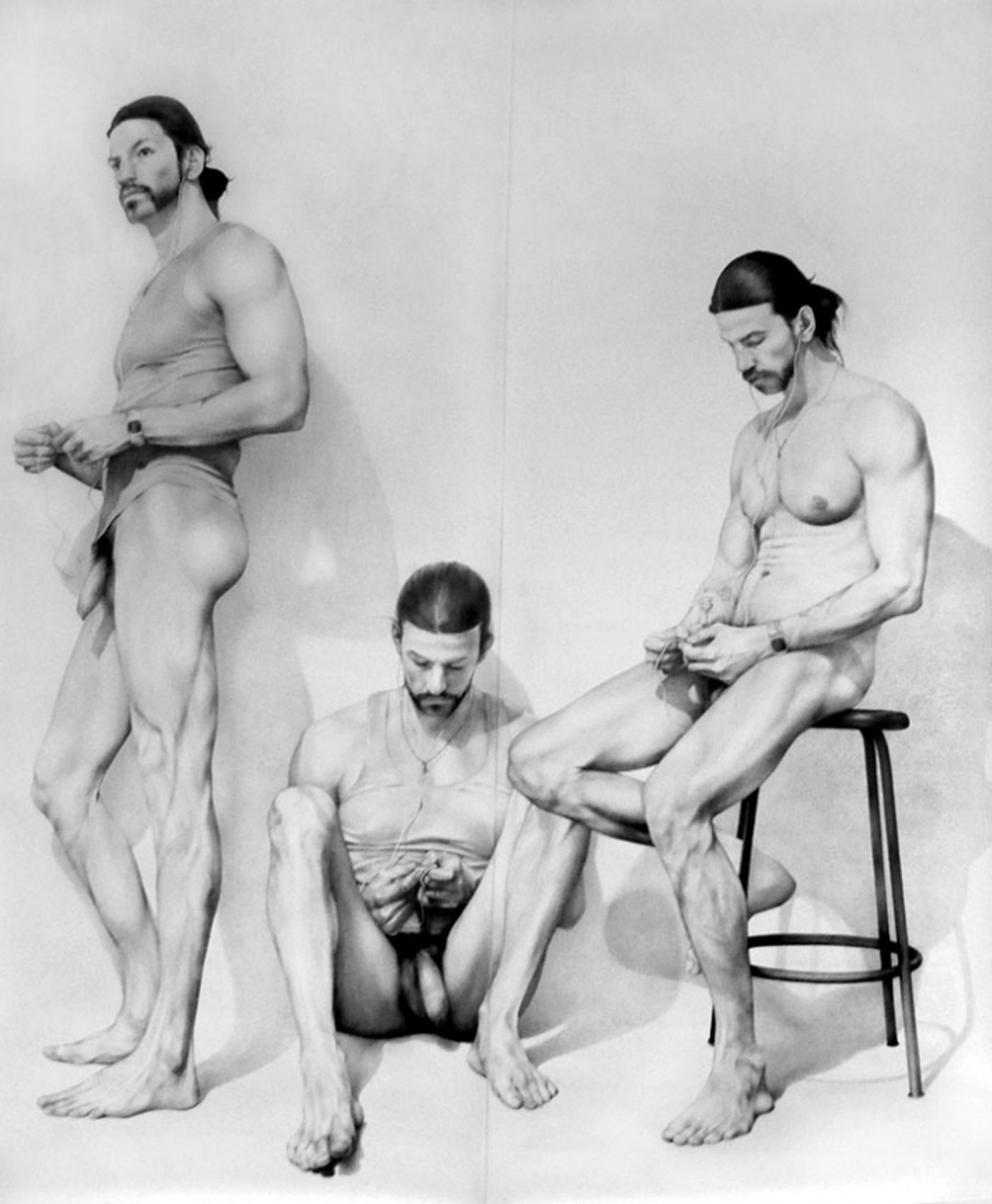
Zachari Logan: Redefining Masculinity Through Self-Representation
Words by Costas Voyatzis
Location
Saskatoon, Canada
Zachari Logan: Redefining Masculinity Through Self-Representation
Words by Costas Voyatzis
Saskatoon, Canada
Saskatoon, Canada
Location
Born in 1980 in Saskatoon, Canada, Zachari Logan is a bold and introspective artist whose work challenges societal norms and stereotypes surrounding masculinity and queerness. At just 28 years old, Logan has carved out a space in contemporary art with his compelling paintings and drawings, where his own body serves as the central subject. His art deconstructs historical and cultural archetypes, juxtaposing classical artistic traditions with deeply personal narratives.
As a queer artist, Logan utilizes the vocabulary of realist figurative painting and drawing to explore and critique notions of male bravado, heroism, and narcissism. Drawing inspiration from Neo-classical, Baroque, and Renaissance art, his work situates his identity within a complex visual language, adding psychological and metaphorical depth to his creations.
Ahead of his solo exhibition at JEANROCH DARD GALLERY in Paris (17 January – 7 February 2009), Logan sat down with Yatzer to discuss his inspirations, process, and personal reflections on art and life.
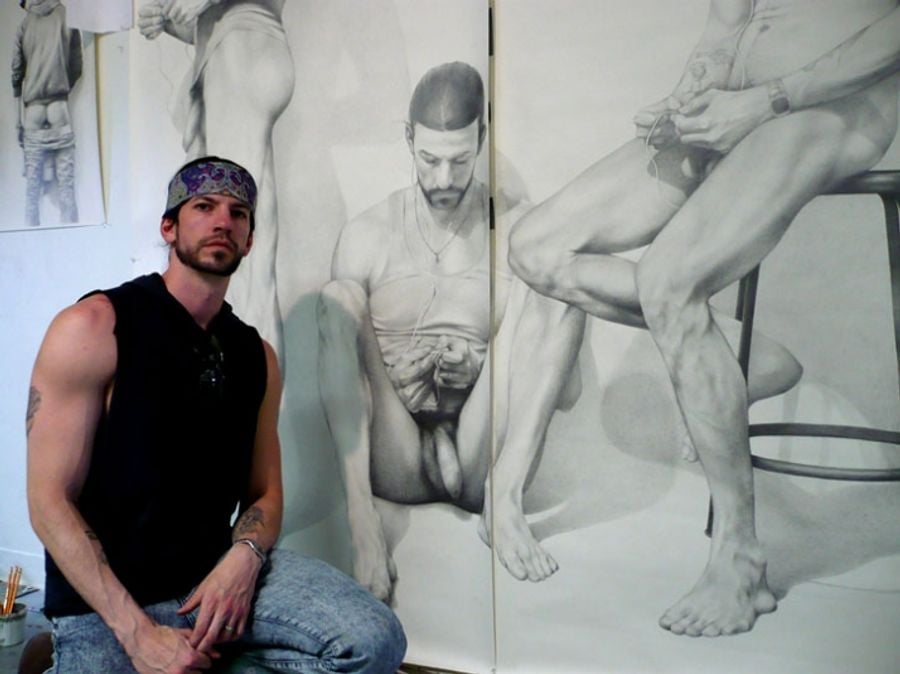
Zachari Logan, 2008
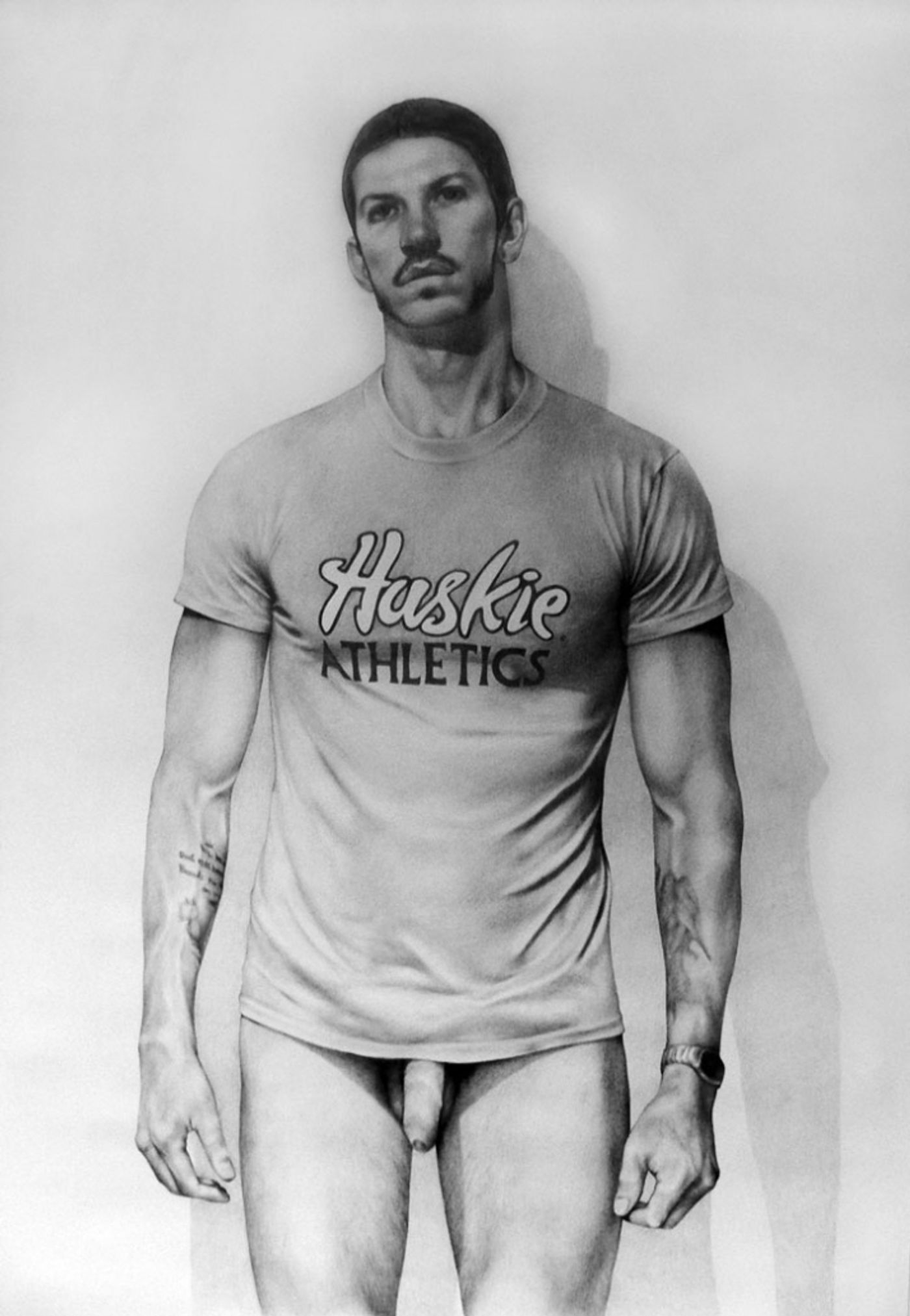
Huskie by Zachari Logan, 2008
Describe yourself in five words.
Irreverent, enjoyable, intelligent, sarcastic, loyal.
What inspires you?
I’m inspired by history, aesthetics, and a good story with fascinating characters. I’m also often inspired by the mundane interactions of everyday life.
What is your belief about narcissism?
All artists are narcissistic in a way—though I don’t mean this negatively. We all create work about ourselves and the issues that affect us. I use myself as a mirror to engage viewers in a conversation about masculine stereotypes and queerness.
The repetitive depiction of myself in my work suggests an inherent narcissism. It explores the auto-eroticization of one’s own image, a phenomenon often stigmatized in heterosexist societies as effeminate or homoerotic. By unapologetically using this rhetoric of self-satisfaction, I aim to destabilize hetero-centric notions of queer dynamics while playing into stereotypes.
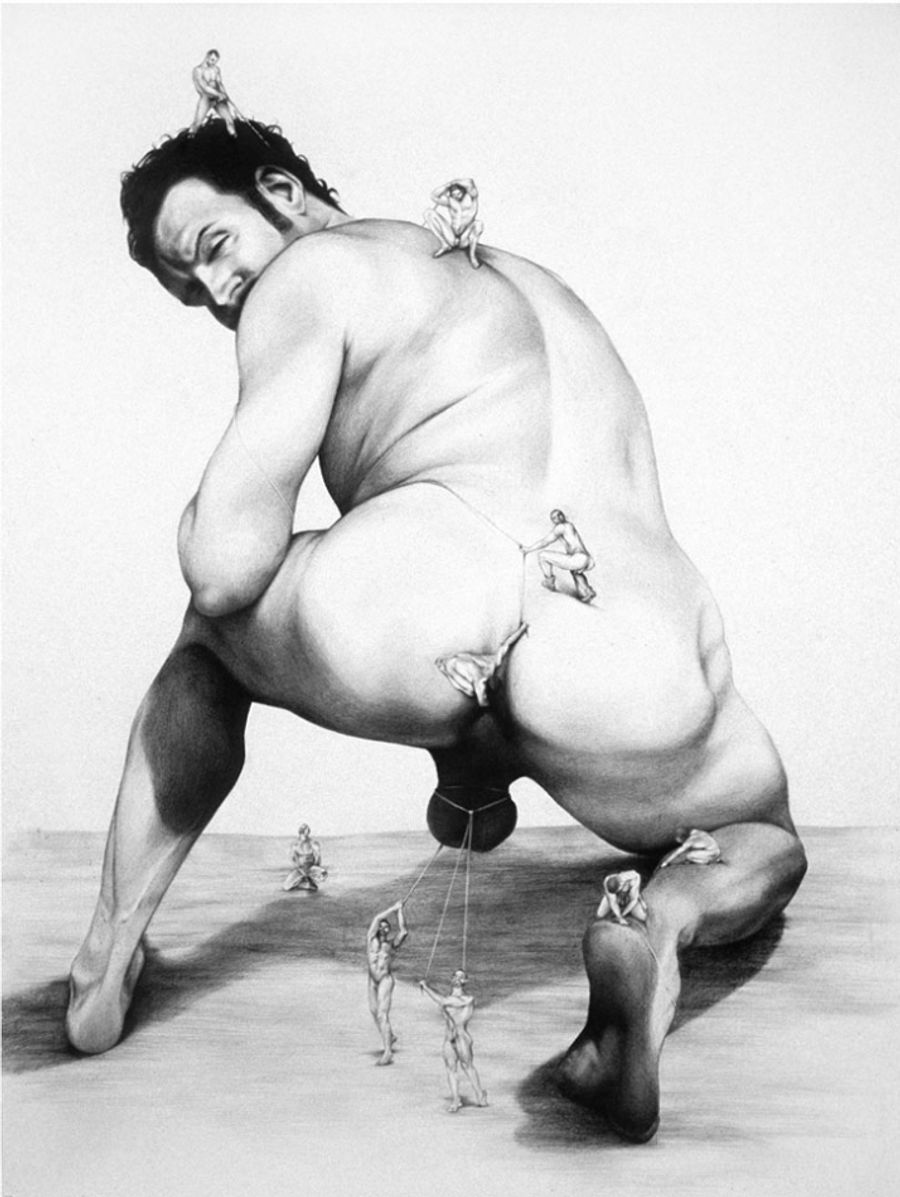
Gulliver by Zachari Logan, 2005
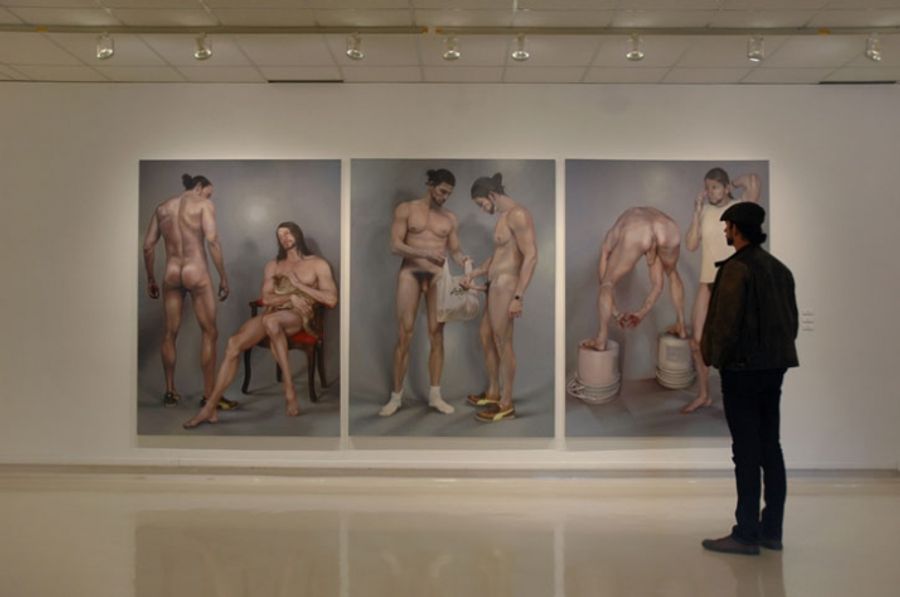
in and out 1,2,3 by Zachari Logan, 2008 / photo by Karla Griffin
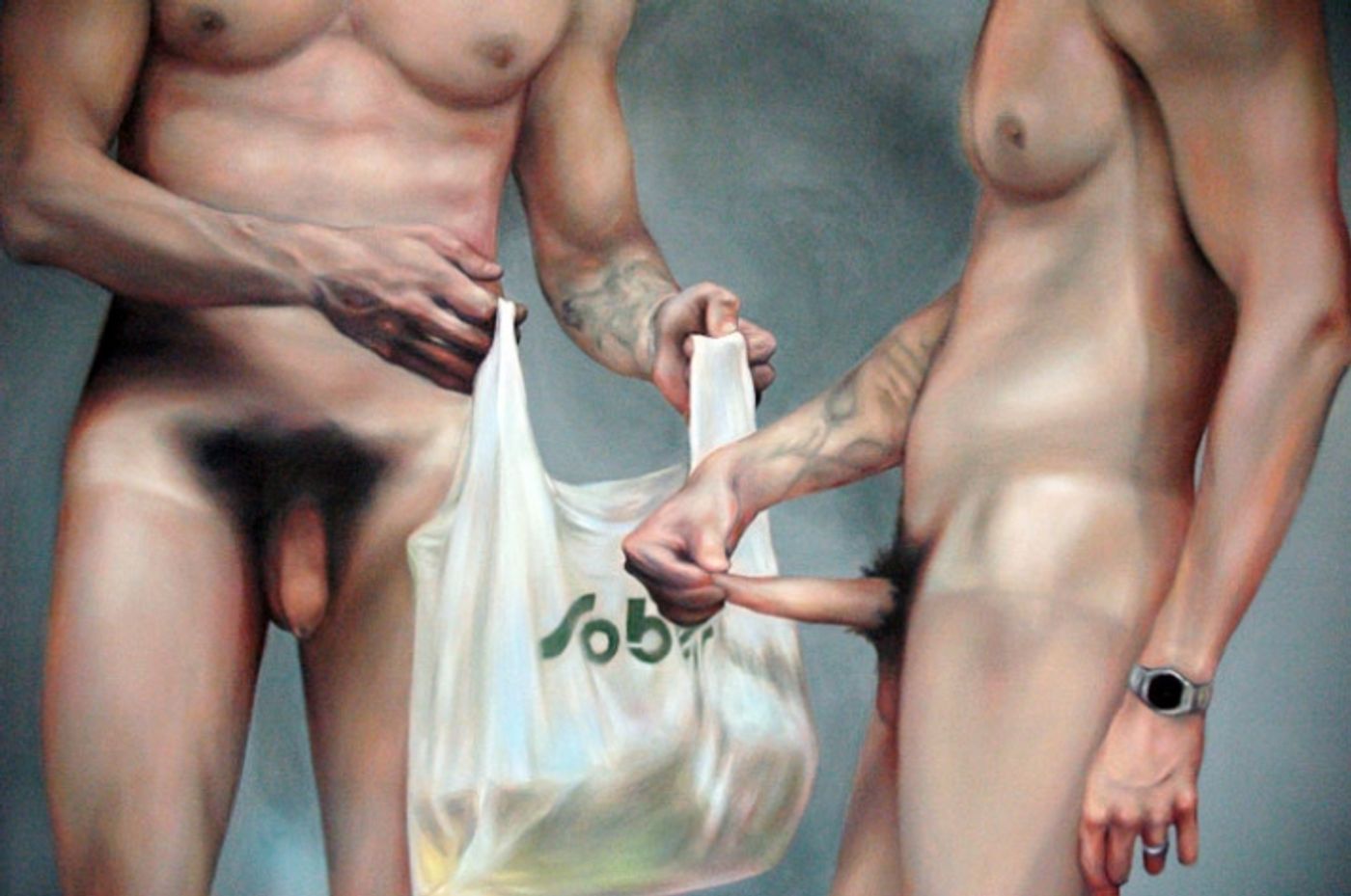
in and out(detail) by Zachari Logan, 2008
Why have you chosen yourself as the protagonist of your paintings?
Who says I’m always the protagonist?! That said, I am confident in myself, and I think that comes through in my work. Using my own image allows me to control how I present myself, enabling me to craft nuanced narratives about my life as a gay man and how others perceive me.
What made you start painting yourself naked?
Initially, I painted men sourced from everyday imagery—internet porn, magazines, and photographs—but I felt those works lacked nuance. Using myself as the subject allowed me to delve deeper into masculine portrayals, offering greater control and psychological connection.
If you could be born in another century, which one would it be and why?
I’d pick the 16th century to meet Caravaggio, my favorite artist, or the 19th century to meet Arthur Rimbaud and Oscar Wilde. That said, I’m glad to live in a time with modern medicine!
Which of your works are you most proud of?
It’s hard to say, but my favorite right now is In and Out #1.
How does your husband, Ned, feel about your self-portraits?
We’ve had some long conversations about it, but Ned understands that these works aren’t about my sexual appetites. They’re more about my body and its place in the world.

Huskie by Zachari Logan, 2008
Are you religious?
I’m more irreligious. I appreciate the cultural and historical significance of religion, but fanaticism and blind devotion often scare me.
If you could go on a weekend trip with eight famous people, dead or alive, where would you go, and who would you invite?
I’d take Caravaggio, Oscar Wilde, Arthur Rimbaud, Queen Elizabeth I, Elton John, Tori Amos, Anne Boleyn, and Virginia Woolf to Lisbon.
What’s your favorite movie?
The Shining by Stanley Kubrick—hands down.
Are you afraid of the future?
No.
Describe your perfect day.
Reading a good book with coffee, followed by some studio time.
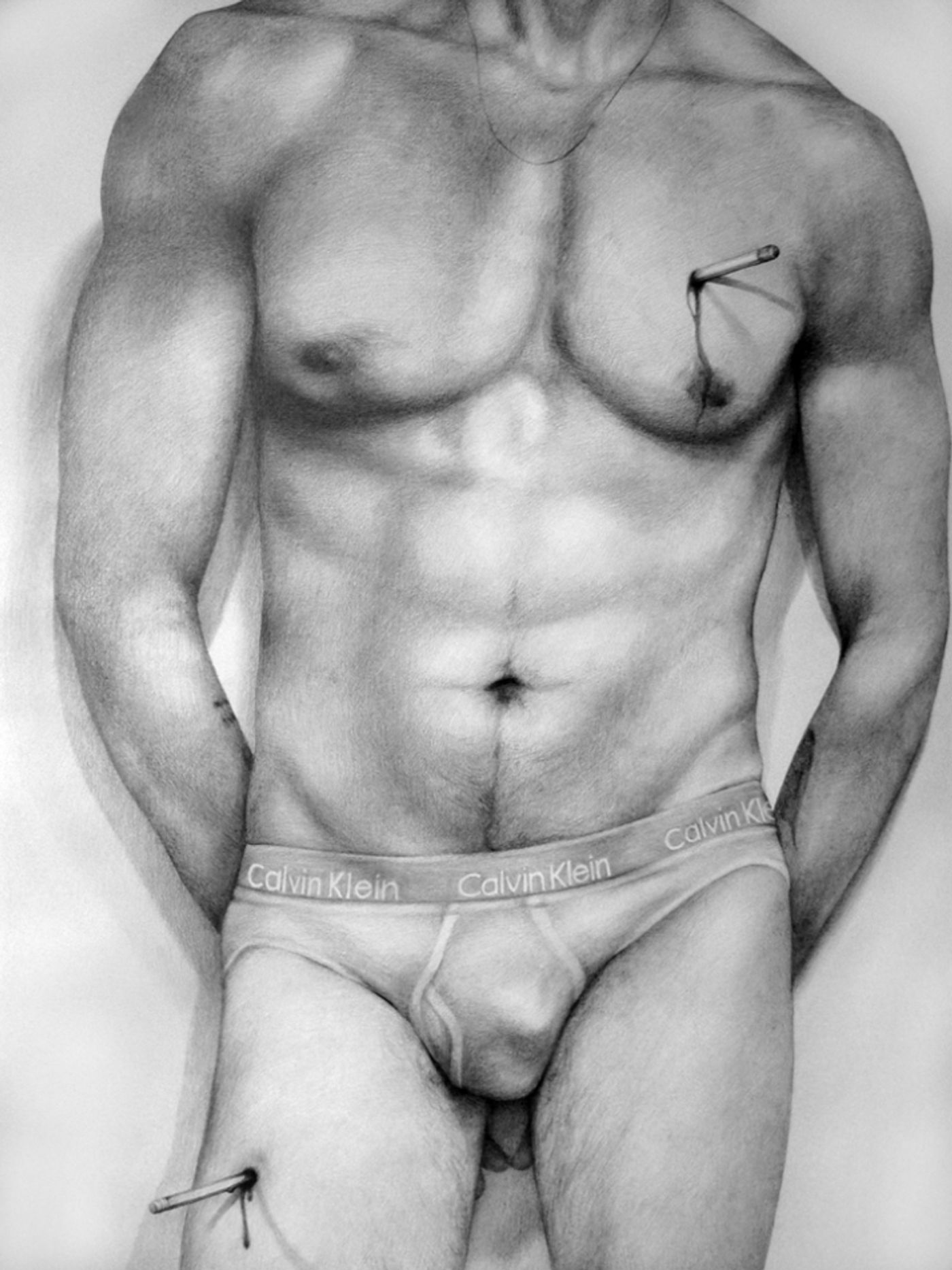
Sebastian (detail) by Zachari Logan, 2008
"My body is a catalyst for my fascination with the stereotypical portrayals of masculinity. The act of weightlifting, and attaining a well-sculpted body, is envisioned stereotypically as a visual mark of masculine enterprise, an act I partake in on a daily basis. Without needing to see myself engaged in the act itself, my drawn body implies the performance of athleticism. This athleticism, coupled with the theatricality of a doppelganger or triplet coexisting on the same stage, is designed to subtly evoke feelings of competition, fear, and omnipotence—all in relation to performance anxiety.
Although in most of these drawings I depict my body on a life-sized scale, the pictorial space in these drawings is quite shallow, with just enough room for the figures to exist and interact. This lack of spatial depth is referential to Neo-Classical space, in which Spartan bodies were used to visually epitomize the strength of the empire. The containment of space in these drawings is structured to illustrate a sense of claustrophobia and is directly referenced to the viewer’s own body. This is a space that is in-between or marginal—a visual realm that is too small to exist within comfortably but is significant enough to contemplate being in.
In both my graphic work and my painting, I confront the notion that masculinity is homogenous and question heteronormative sexuality as the origin by which all other male sexual realities are judged. Recently, my painting has become more literally autobiographical, in the sense that I am exploring my own image as the subject matter. While I am still analyzing constructions of masculinity through the exploration of archetypal male identities, I am performing a sort of drag by impersonating these identities using a semblance of my own image and costuming.
The staged backdrops, which frame these performances—both minimalistic and bordering on tableau—further reference the constructed nature of sexuality and identity. While my drawings continue the same types of exploration into masculinity through the use of constructed images and elaborate backdrops, they are more allegorical in nature. Visually, I am interested in Neo-Classical and Baroque spatial realms. In my work, I mimic these styles, referencing art-historical masculine portrayals. I then undermine these very constructions by returning the instinctually heterosexist gaze with a self-anxious queer narrative.."
Zachari Logan

